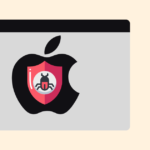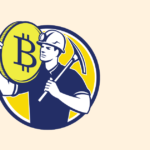If you’ve ever been fascinated by the world of digital currencies and wondered about creating your own cryptocurrency, then you’ve arrived at the right place.
This comprehensive guide is designed for both tech enthusiasts and newcomers alike, offering a straightforward roadmap from concept to launch. Ready to take the first step into the realm of blockchain and digital currencies? Let’s get started.
Key Takeaways
- Understanding cryptocurrency and blockchain basics is crucial before creating your own cryptocurrency.
- It is important to be aware of the laws and regulations surrounding cryptocurrencies in your region.
- Creating a successful cryptocurrency requires careful planning and development.
Table of Contents
Understanding Cryptocurrency

Cryptocurrency is a digital asset that is designed to work as a medium of exchange. It uses cryptography to secure and verify transactions and to control the creation of new units. Cryptocurrencies are decentralized, meaning they are not controlled by any government or financial institution. Instead, they rely on a network of computers to process transactions and maintain the integrity of the system.
One of the key features of cryptocurrency is its use of blockchain technology. A blockchain is a decentralized, digital ledger that records transactions across a network of computers. Each block in the chain contains a cryptographic hash of the previous block, a timestamp, and transaction data. This makes it virtually impossible to alter the contents of the blockchain without being detected.
Cryptocurrencies can be used for a variety of purposes, including as a medium of exchange, a store of value, and as a speculative investment. Some cryptocurrencies, such as Bitcoin, have gained widespread acceptance as a means of payment, while others are primarily used for investment purposes.
One of the benefits of cryptocurrency is its potential for anonymity. Transactions are recorded on the blockchain, but the identities of the parties involved are not. This makes it difficult for governments and other entities to track transactions and monitor the flow of money.
Blockchain Basics
Blockchain is a decentralized digital ledger technology that is used to record transactions across multiple computers. It is a distributed database that is maintained by a network of computers, rather than a central authority. The technology is secure, transparent, and tamper-proof, making it ideal for use in cryptocurrencies.
How Blockchain Works
Blockchain works by creating a chain of blocks that contain transaction data. Each block in the chain contains a cryptographic hash of the previous block, creating an unbreakable chain of blocks. This makes it impossible to alter any previous transaction data without altering the entire chain.
The process of adding a block to the chain is called mining. Miners compete to solve complex mathematical problems to add a block to the chain. Once a miner solves the problem, they add the block to the chain and are rewarded with cryptocurrency.
Types of Blockchain
There are two types of blockchain: public and private. Public blockchains are open to anyone and are often used in cryptocurrencies. Private blockchains are restricted to a specific group of users and are often used in enterprise applications.
Advantages of Blockchain
Blockchain has several advantages over traditional centralized systems. It is secure, transparent, and tamper-proof, making it ideal for use in cryptocurrencies. It is also decentralized, meaning that there is no single point of failure. This makes it more resilient to attacks and more reliable than traditional systems.
In addition, blockchain is more efficient than traditional systems. Transactions can be processed faster and with lower fees than traditional systems. This makes it ideal for use in cross-border transactions and micropayments.
Cryptocurrency Laws and Regulations
When creating a cryptocurrency, it’s important to be aware of the laws and regulations that apply to this type of digital asset. While the rules vary by country and region, there are some general guidelines that can help ensure compliance and avoid legal issues.
In the United States, for example, there is currently no federal regulation specifically governing cryptocurrencies. However, the Securities and Exchange Commission (SEC) has issued guidance on how existing securities laws apply to digital assets, and the Commodity Futures Trading Commission (CFTC) has classified certain cryptocurrencies as commodities. Additionally, individual states may have their own laws and regulations regarding cryptocurrencies.
It’s also important to consider anti-money laundering (AML) and know-your-customer (KYC) regulations when creating a cryptocurrency. These regulations are designed to prevent illegal activities such as money laundering and terrorist financing, and they may require cryptocurrency issuers to collect and verify certain information about their users.
Furthermore, tax laws may also apply to cryptocurrencies. In the United States, for example, the Internal Revenue Service (IRS) has issued guidance on how to report cryptocurrency transactions for tax purposes.
Overall, it’s important to consult with legal experts and stay up-to-date on the latest laws and regulations when creating a cryptocurrency. Failure to comply with applicable laws and regulations can result in legal and financial consequences.
Creating Your Cryptocurrency (The Easiest Way)
When it comes to creating a cryptocurrency, there are several key steps that need to be taken. In this section, we will cover the most important ones, including defining the purpose of your cryptocurrency, choosing a consensus mechanism, and designing nodes.
Defining Purpose
The first step in creating a cryptocurrency is to determine its purpose. This can include anything from enabling fast and secure transactions to providing a new way to invest in a particular market. Developers must also decide whether their cryptocurrency will be open-source or closed-source, and what type of programming language it will use.
It’s important to note that the purpose of your cryptocurrency will determine many of its features, including its tokenomics, security measures, and user interface. Therefore, it’s essential to carefully consider the purpose of your cryptocurrency before moving on to the next steps.
Choosing a Consensus Mechanism
The next step in creating a cryptocurrency is to choose a consensus mechanism. This is a method by which the network of nodes that supports the cryptocurrency reaches a consensus on the state of the blockchain. Some of the most popular consensus mechanisms include Proof-of-Work (PoW), Proof-of-Stake (PoS), and Delegated Proof-of-Stake (DPoS).
Each consensus mechanism has its own advantages and disadvantages, so it’s important to choose the one that best fits the purpose of your cryptocurrency. For example, PoW is known for being highly secure, but it also requires a lot of computational power, which can make it difficult for smaller nodes to participate in the network.
Designing Nodes
The final step in creating a cryptocurrency is to design the nodes that will support the network. Nodes are essentially computers that run the software necessary to maintain the blockchain. They can be divided into two categories: full nodes and light nodes.
Full nodes store a complete copy of the blockchain, while light nodes only store a subset of the data. Full nodes are more secure but require more storage space and processing power, while light nodes are less secure but can be run on less powerful hardware.
When designing nodes, it’s important to consider factors such as security, scalability, and ease of use. For example, you may want to choose a node design that allows for easy upgrades and maintenance, or one that is optimized for low-latency transactions.
Developing Cryptocurrency Code
Developing cryptocurrency code requires a thorough understanding of blockchain technology and programming languages such as Python and Solidity. Here are the key steps to follow when developing cryptocurrency code:
- Choose a blockchain platform: The first step in developing cryptocurrency code is to choose a blockchain platform. Ethereum is one of the most popular platforms for creating cryptocurrencies, due to its robust smart contract capabilities. However, there are also other platforms such as NEO, EOS, and TRON that can be used.
- Define the token parameters: The next step is to define the token parameters such as the token name, symbol, and total supply. It is important to carefully consider these parameters as they will affect the functionality and value of the token.
- Write the smart contract: The smart contract is the code that defines the rules and functionality of the token. It is written in Solidity, a programming language specifically designed for Ethereum smart contracts. The smart contract should include functions for transferring tokens, checking balances, and managing the token supply.
- Test the smart contract: Before deploying the smart contract to the blockchain, it is important to test it thoroughly to ensure that it is functioning as intended. This can be done using tools such as Truffle and Ganache.
- Deploy the smart contract: Once the smart contract has been tested and verified, it can be deployed to the blockchain. This will make the token publicly available and allow users to interact with it.
- Create a user interface: To make the token more accessible to users, it is important to create a user interface that allows them to easily buy, sell, and transfer the token. This can be done using web3.js, a JavaScript library that allows interaction with the Ethereum blockchain.

Launching and Marketing Your Cryptocurrency
Once your cryptocurrency is developed, it’s time to launch it and get it out into the world. This can be a daunting task, but with the right approach, you can successfully market your cryptocurrency and gain a following.
Developing a Marketing Strategy
Before launching your cryptocurrency, it’s important to develop a marketing strategy. This should include identifying your target audience, understanding their needs and interests, and determining the best channels to reach them.
Some effective marketing channels for cryptocurrencies include social media, email marketing, and online forums. You may also want to consider partnering with influencers or other businesses in the industry to help spread the word about your cryptocurrency.
Creating a Website and Whitepaper
One of the most important aspects of launching your cryptocurrency is creating a website and whitepaper. Your website should provide information about your cryptocurrency, its features, and how it works. It should also include a roadmap for future development and a section for investors.
Your whitepaper should provide more detailed information about your cryptocurrency, its technology, and its potential use cases. It should be well-written and easy to understand, and should include a clear explanation of your cryptocurrency’s value proposition.
Launching Your Cryptocurrency
When it comes time to launch your cryptocurrency, you’ll need to decide how to distribute it. Some options include an initial coin offering (ICO), airdrops, or simply selling it on an exchange.
Regardless of how you choose to distribute your cryptocurrency, it’s important to make sure that you have a strong community of supporters who are excited about your project. This will help to ensure that your cryptocurrency gains traction and continues to grow over time.
Staying Compliant
Finally, it’s important to stay compliant with all relevant regulations when launching and marketing your cryptocurrency. This may include registering with regulatory bodies, complying with anti-money laundering (AML) and know-your-customer (KYC) regulations, and ensuring that your marketing materials are accurate and not misleading.
Step-By-Step How To Create a Cryptocurrency on the Ethereum Network
Ethereum is my favorite network personally. Let’s walk through the exact steps of how to create a crypto on ETH right now:
To create a cryptocurrency on Ethereum, you will need to:
- Create a smart contract.
- Deploy your smart contract to the Ethereum blockchain.
- Promote your cryptocurrency to potential users and investors.
Creating a smart contract
To create a smart contract, you will need to use a programming language such as Solidity. Solidity is a high-level programming language that is specifically designed for writing smart contracts.
Here is a simple example of a Solidity smart contract for a cryptocurrency:
Solidity
contract MyToken {
// The total supply of tokens.
uint public totalSupply;
// A mapping of addresses to token balances.
mapping(address => uint) public balances;
// Constructor.
constructor() {
totalSupply = 1000000;
balances[msg.sender] = totalSupply;
}
// Transfer tokens from one address to another.
function transfer(address to, uint amount) public {
require(balances[msg.sender] >= amount);
balances[msg.sender] -= amount;
balances[to] += amount;
}
}
Use code with caution.
This smart contract defines a simple cryptocurrency called MyToken. The total supply of MyTokens is 1000000 and the initial balance of the creator of the smart contract is 1000000 MyTokens.
Deploying your smart contract
Once you have created your smart contract, you need to deploy it to the Ethereum blockchain. To do this, you will need to use an Ethereum wallet such as MetaMask.
To deploy your smart contract using MetaMask, follow these steps:
- Open MetaMask and connect to the Ethereum mainnet.
- Click on the “Deploy Contract” button.
- Select the Solidity file containing your smart contract.
- Click on the “Deploy” button.
MetaMask will then deploy your smart contract to the Ethereum blockchain. Once the smart contract is deployed, you will be able to view the contract address on MetaMask.
Not too bad right?
Conclusion
Creating a cryptocurrency is a complex and challenging process that requires significant technical expertise, market research, and legal knowledge. However, it is also a rewarding and exciting endeavor that can offer numerous benefits, such as financial freedom, decentralization, and transparency.
While creating a cryptocurrency is not an easy task, it is also not an impossible one. With the right team, resources, and planning, anyone can create a successful cryptocurrency that can revolutionize the financial industry. However, it is crucial to remember that creating a cryptocurrency is only the first step; maintaining and growing it requires ongoing effort, innovation, and community support.
In conclusion, we hope that this comprehensive guide has provided you with the knowledge and tools necessary to learn how to create your own cryptocurrency. We encourage you to continue learning, exploring, and experimenting with this exciting technology, and wish you all the best in your cryptocurrency journey.
How to Create a Cryptocurrency FAQs
What are the steps to create a cryptocurrency?
To create a cryptocurrency, you need to research the use cases, choose a consensus mechanism, select a blockchain platform, publish the whitepaper on your website and social media, design the nodes, establish your blockchain’s internal architecture, create your coin or token, and design the API and user interface (UI).
How can I create a cryptocurrency without coding skills?
If you do not have coding skills, you can use a cryptocurrency creation platform like Ethereum, which offers a user-friendly interface for creating your own cryptocurrency. Alternatively, you can hire a developer or a team of developers to create your cryptocurrency.
What are the costs associated with creating a cryptocurrency?
The costs associated with creating a cryptocurrency depend on the complexity of the project. If you are creating a simple cryptocurrency, the costs can be as low as a few thousand dollars. However, if you are creating a more complex cryptocurrency, the costs can run into the millions of dollars.
What is the difference between a cryptocurrency and a digital currency?
A cryptocurrency is a type of digital currency that uses encryption techniques to regulate the generation of units of currency and verify the transfer of funds. Digital currencies, on the other hand, refer to any form of currency that exists in digital form.
How do I create a cryptocurrency wallet?
To create a cryptocurrency wallet, you can use an existing wallet provider or create your own wallet. If you choose to create your own wallet, you will need to hire a developer or a team of developers to create the wallet software.
How can I make my own cryptocurrency profitable?
To make your own cryptocurrency profitable, you need to create a strong use case for your cryptocurrency, build a strong community around your cryptocurrency, and ensure that your cryptocurrency is listed on major exchanges. Additionally, you can offer incentives to users, such as discounts or rewards, to encourage them to use your cryptocurrency.
- How to Create a Cryptocurrency: A Step-by-Step Guide (As of June 2025) - June 1, 2025
- How To Delete All Discord Messages - June 1, 2025
- Best VPN for Binance: Secure and Anonymous Trading - June 1, 2025











2 thoughts on “How to Create a Cryptocurrency: A Step-by-Step Guide (As of June 2025)”